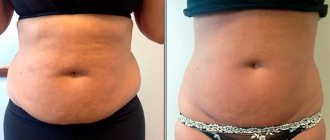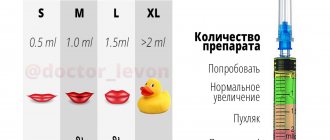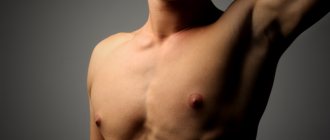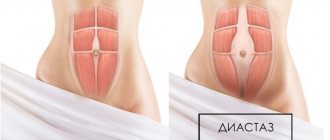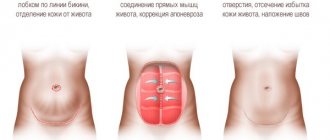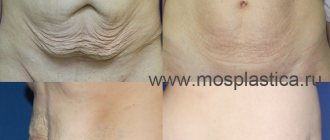The fight against obesity begins not with a diet or a gym membership, but with a decision to change your life.
What is obesity?
According to official statistics, 30% of the population has been diagnosed with this disease. Obesity has many other serious consequences.
In addition to mental trauma and social isolation, obesity causes diseases of the joints, spine, heart, diabetes, hypertension, the formation of gallstones, hormonal imbalance, sleep disturbances, infertility, an increased risk of cancer and many other diseases, and low life expectancy is associated with obesity.
The UMMC-Health clinic has assembled a team of specialists who are ready to help a person who has realized that he has a problem with excess weight.
Why a whole team? Isn't surgery alone enough?
Strictly speaking, not all stages of obesity need to be operated on at all. For example, the first stage, when the weight is slightly exceeded, can be reversed with the help of a psychologist and nutritionist. But the next stages will not pass on their own, and therefore endocrinologists and surgeons are involved in the work.
What weight is considered overweight?
In approximately 2-6% of people, obesity takes forms that are dangerous to health and life. This condition is called morbid obesity and requires treatment.
To indirectly assess the degree of correspondence between height and weight, a parameter called body mass index (BMI) is used. Calculating body mass index is very simple: you need to divide your weight (in kilograms) by your height (in meters) squared.
We recommend consulting with a bariatric surgeon if you:
1. BMI > 35 kg/m2
OR
BMI > 30 kg/m2 in the presence of concomitant diseases associated with excess weight.
2. Attempts to reduce body weight through diets and other conservative methods do not bring results.
How can we help?
In our clinic, patients with severe forms of obesity can be offered training programs to reduce excess body weight, dietary therapy methods, assistance from an endocrinologist, as well as modern endoscopic and surgical treatment methods: installation of an intragastric balloon, longitudinal gastrectomy, gastric banding, gastric bypass, biliopancreatic bypass stomach.
These operations differ in the degree of risk, complexity, and acceptable capabilities, but all of them have already proven themselves well both abroad and in our practice. Thanks to the capabilities of modern surgery, many of our patients have already lost excess weight, experienced a fundamentally different quality of life, and gained new social opportunities.
Types of bariatric surgery
- Longitudinal gastrectomy (LG)
How exactly is the patient treated?
We examine his physical and psychological condition, find out whether the person is really ready to change his life. After all, getting rid of excess weight with the help of such a drastic measure as gastric resection (which is what we do in surgery) means completely abandoning previous habits. After the operation, the appetite sharply decreases, the person eats a small amount of food and begins to rapidly lose weight: up to 70–80% of excess weight is lost. The final results of the operation are usually summed up after two years. And if the patient followed our recommendations and changed his lifestyle, then many associated diseases disappear along with the kilograms.
Diseases treated by specialists at the “UMMC-Health” Excess Weight Correction Clinic:
- Obesity
- Diabetes mellitus type II
- Atherogenic dyslipidemia (hypercholesterolemia, hypertriglyceridemia) - surgical treatment
- Plastic surgery after weight loss
Manipulations:
- Intragastric balloon placement
- Removal of the intragastric balloon
- Gastric band adjustment
Liposuction: possibilities of the technique
Surgical liposuction is used to sculpt body contours by reducing the volume of subcutaneous tissue in certain anatomical areas.
Lipomodeling is most in demand in the area of the anterior abdominal wall, in particular in the lower abdomen. Liposuction of the thighs in the “breeches zone” and buttocks is very popular. With the help of lipomodelling, you can remove fat deposits in almost any anatomical area, from the “double chin” to the area of the knee joints. It is important to understand that the purpose of the operation is not only to remove fatty tissue, but also to change the contours of the problem area in order to create a harmonious, attractive and sexy figure.
Abdominoplasty in Krasnodar
Over time, the stomach can lose its previous shape for various reasons. Most often, women resort to abdominoplasty after pregnancy and childbirth. People who have dramatically lost weight also turn to a plastic surgeon. Some clients resort to abdominoplasty due to age, because over the years, muscles and skin lose their elasticity, and, unfortunately, this cannot be corrected by diet.
Abdominoplasty is an operation during which it is necessary to remove excess skin and subcutaneous fat from the abdominal area.
Is it worth doing liposuction on the abdomen and other problem areas?
When to do liposuction? The main indication for liposuction is the presence of local excess volume in the so-called fat traps. In men, this includes the lower abdomen, in women - the abdomen, buttocks and thighs.
Is it worth doing abdominal liposuction if there is local excess adipose tissue? Yes. Due to the peculiarities of the hormonal regulation of fat tissue metabolism in problem areas, it is almost impossible to get rid of annoying folds through physical exercise. Only a very grueling diet will help, an excellent alternative to which is liposuction.
Is it worth doing liposuction for obesity? Definitely not. A total increase in fat reserves should be combated using traditional methods - limiting calorie intake and increasing the amount of physical activity. Only after normalization of the body mass index can the issue of removing fatty tissue in the most problematic areas be considered.
Surgery
- What is abdominoplasty?
- What are the indications for abdominoplasty?
- What are the contraindications to abdominoplasty?
- How is the operation performed?
- What is lipoabdominoplasty?
- What is Vaser lipoabdominoplasty?
- How is the recovery period going?
- How soon can I see results after Vaser lipoabdominoplasty?
- What complications can occur after Vaser lipoabdominoplasty?
- How long does Vaser lipoabdominoplasty surgery take?
- How traumatic is Vaser lipoabdominoplasty surgery?
- What subtleties are there in carrying out this operation?
- What results can be expected after Vaser lipoabdominoplasty?
- How long do results last after Vaser lipoabdominoplasty?
- What will happen to the results of Vaser lipoabdominoplasty after gaining weight?
- Is Vaser lipoabdominoplasty worth it?
What is abdominoplasty?
Abdominoplasty is a complex surgical intervention aimed at restoring aesthetic proportions in the abdominal area. The name of the operation comes from the Latin word “abdomen”, which means “belly”.
What are the indications for abdominoplasty?
Abdominoplasty is not a way to lose weight or combat obesity. It is indicated for patients with excess skin on the anterior wall of the abdomen (skin-fat apron), with excess skin above the umbilical area, with pronounced postoperative scars or stretch marks. This operation is also used in the case of weakened abdominal muscles, umbilical hernia, and to achieve a pronounced waistline. Abdominoplasty is in demand in women after childbirth due to stretching of the muscles of the anterior abdominal wall, in patients after major weight loss or leading an inactive lifestyle. Men who are concerned about their appearance and want to get rid of an unaesthetic “apron” often turn to tummy tuck surgery.
What are the contraindications to abdominoplasty?
Abdominoplasty is not recommended for women planning a pregnancy because the vertical abdominal muscles may become stretched again. People who are just planning significant weight loss should postpone surgery until they reach their goal weight.
Absolute contraindications to tummy tuck are:
- obesity;
- pregnancy and lactation;
- postoperative scars in the area above the navel;
- inflammatory or acute infectious process in the surgical area;
- diabetes;
- uncompensated heart or pulmonary failure;
- diseases of internal organs;
- blood clotting disorder.
One of the important points in making a decision about surgical intervention is discussing the desired effect with your doctor. The patient must understand that abdominoplasty. Of course, it will change his appearance for the better, but will not make it ideal. It will take a lot of work on yourself in terms of acquiring new healthy habits. Discipline will help you maintain your results for a long time, perhaps forever.
How is the operation performed?
There are three types of operations in abdominoplasty.
- Standard abdominoplasty is an operation that is performed over the entire area of the abdominal wall with suturing of the abdominal muscles. It takes about 2-3 hours and is performed under general anesthesia. The surgeon makes a long incision from one pelvic bone to the other, just above the pubic area. A second incision is made around the navel to separate it from the surrounding tissue. The doctor then separates the skin from the abdominal wall, thus gaining access to the vertical abdominal muscles. The muscles are tightened and fixed in a new position. This achieves a toned stomach shape and a narrow waist. Excess skin is excised and a new opening for the navel is created. Next, the incisions are stitched and dressings are applied to the seams.
- A mini abdominoplasty or partial abdominoplasty involves a small incision without transferring the belly button. In this case, the skin flap is separated downwards and the excess skin is excised.
- Endoscopic abdominoplasty does not require incisions and is indicated for patients whose skin is in good elastic condition and there is no excess skin. The surgeon makes several completely invisible incisions, which will leave no scars.
Abdominoplasty can be combined with liposuction or Vaser liposuction. In this case, we are talking about lipoabdominoplasty and Vaser-lipoabdominoplasty, which are performed by Arslan Agayevich Penaev in his clinic.
What is lipoabdominoplasty?
Lipoabdominoplasty is a combination of two operations in one: liposuction (removal of excess fat) and abdominoplasty. Lipoabdominoplasty is a new generation of abdominoplasty, which can significantly reduce the risks of any complications: seroma, necrosis, etc. Classic abdominoplasty is a very traumatic operation, it leads to the emergence of a large “dead” space - from the incision along the bikini line to the hypochondrium.
Lipoabdominoplasty, performed by Aslan Agayevich Penaev, is an operation with maximum preservation of “living” tissue. After the incision, the skin is not completely separated, but is raised on feeding “legs” while maintaining all blood vessels and nerves intact. In surgical terminology, a “pediculated flap” is an area of skin with subcutaneous fatty tissue, separated from its base and from surrounding tissues in such a way that it is connected to them only in a limited area, which is called the “pedicle”, and through which the flap receives a blood supply and innervation. Since the skin through the feeding leg remains in constant connection with the donor site, its basic properties are preserved, and the activity of both the sweat and sebaceous glands is soon restored. At the transplanted site, the skin grows in the usual manner, as it did at the donor site.
This high-tech technique allows you to avoid future problems with tissue survival, blood supply and sensitivity. The only area that requires complete release of space is the place for suturing the muscles of the anterior abdominal wall. If there is muscle diastasis, in simple terms, if the muscles have separated (for example, during childbirth or pregnancy), then in order to stitch them together, the surgeon will need to free up a space that resembles a kind of tunnel. Then the area of the upper flap is degreased and becomes comparable in thickness to the bikini area flap. This is important for subsequent perfect results. This is how they are stitched together. The proportionality of the tissue thickness allows one to avoid the “sagging” of tissues characteristic of the classical technique.
What is Vaser lipoabdominoplasty?
Vaser is a third-generation ultrasound device that allows very fine liposuction and, in the literal sense of the word, culturing the relief of the muscle surface. Vaser acts selectively on fat cells without damaging blood vessels and nerves. This effect is achieved due to a precisely selected frequency of ultrasonic vibrations, at which fat cells are separated alive, which then allows them to be used in lipofilling (link to article).
Conventional lipoabdominoplasty uses classic vacuum liposuction. It affects only the middle and deep layers of the skin, while Vaser liposuction allows you to work on the superficial layers to engrave the muscle relief. (picture photo).
What is the multi-technological nature of Vaser lipoabdominoplasty at the Penaev Clinic?
During the operation, several technologies are used: electrosurgical, ultrasound, radiofrequency, all this makes Vaser lipoabdominoplasty at the Penaev Clinic an operation of a new level.
The most modern electrocoagulator used in the clinic today significantly reduces blood loss during surgery. With its help, special low-traumatic incisions are made, which minimizes risks during the intervention.
After surgery, the skin is treated with the Body Tite device. It is used for radiofrequency liposuction and can significantly improve the results of Vaser lipoabdominoplasty. Body Tite tightens the skin, removes the “orange peel” effect or, simply put, the appearance of cellulite, gives a visible result immediately after the procedure and does not require a long recovery period. This device guarantees the absence of the effect of sagging skin after Vaser abdominoplasty.
How is the recovery period going?
After the operation, the patient will remain in the clinic for 1-3 days, depending on the complexity of the intervention. You must wear compression garments for a month. Physical activity will need to be postponed for a month or two, and abdominal exercises are not recommended for 3 months after surgery. You will have to avoid direct sun and solarium for some time, and also not take a hot shower, bath, or go to the sauna until the postoperative scar heals.
How soon can I see results after Vaser lipoabdominoplasty?
The final result of the operation will be clear no earlier than 6-8 months after the intervention.
What complications can occur after Vaser lipoabdominoplasty?
If the doctor's recommendations are not followed, unpleasant complications are possible: suture dehiscence, purulent processes due to wound infection, the presence of hematomas and subcutaneous bleeding, an allergy to the anesthesia drug, and poor tolerability of the operation in general.
How long does Vaser lipoabdominoplasty surgery take?
Depending on the complexity of the intervention, the operation lasts from 2 to 4 hours.
How traumatic is Vaser lipoabdominoplasty surgery?
This is a major surgery and comes with certain risks, like any surgery. However, due to the high-tech approach, which involves minimal tissue trauma during surgery, the use of the latest generation electrocoagulator for minimal blood loss and the use of the Vaser device, the traumatic nature of the operation is greatly reduced. In addition, after abdominoplasty, the patient often undergoes liposuction, and then correction of the operated areas. Vaser lipoabdominoplasty allows you to combine several operations in one.
What subtleties are there in carrying out this operation?
The main subtleties when performing Vaser lipoabdominoplasty depend on the surgeon’s knowledge of medical protocols, his virtuosity and experience, vision of proportions and aesthetic taste. The hardware park is also of paramount importance to obtain the most natural and high quality results.
What results can be expected after Vaser lipoabdominoplasty?
You should expect an excellent aesthetic result, a toned and athletic appearance of the abdomen, smooth elastic skin and a readiness to boldly go to the beach or pool in a bikini a month or two after the operation. If the operation was combined and lipofilling was performed at the same time, then the whole body will acquire an excellent shape and athletic build. All that remains is to maintain this image. Which is not difficult, given the aesthetic value of the acquired result.
How long do results last after Vaser lipoabdominoplasty?
The result can last a lifetime if the patient maintains a healthy lifestyle and moderate physical activity. Overeating and physical inactivity after surgery can lead to a return to the previous results before surgery.
What will happen to the results of Vaser lipoabdominoplasty after gaining weight?
It is better to refrain from violating the doctor’s recommendations, since the result of the operation depends 30% on the patient. If you gain weight, you can have a second operation or correction, but any intervention is fraught with risk, and anesthesia is a serious test for the whole body. So it’s better to watch your weight and lead a healthy lifestyle - this way you can show off your flat stomach for years to come and enjoy wearing tight clothes.
Is Vaser lipoabdominoplasty worth it?
Depending on the structure and condition of the patient’s body, the doctor makes a recommendation to perform surgery or not. The doctor also assesses the patient's BMI. BMI is a body mass index that is used to determine a patient’s normal weight. It is calculated by the formula: the square of height in meters multiplied by weight in kg. A BMI ranging from 19 to 25 is considered normal.
If the doctor sees that the patient is young and a small belly is a consequence of errors in diet and lifestyle, he may recommend a lifestyle change. If the patient has tried everything and has not achieved results, or he does not want/cannot exercise and follow a diet, the doctor will prescribe surgery.
Vaser lipoabdominoplasty is recognized in the global professional community as the most effective plastic surgery to date for restoring the aesthetic shape of the abdomen. This operation will do in a few hours and a month of recovery what a diet and gym will not do in such a short period of time. The patient, inspired by his new body, is likely to give up cakes in favor of a flat stomach. Most patients after Vaser lipoabdominoplasty achieve a healthy lifestyle and maintain it for many years.
An appearance that the patient can be proud of has a positive effect on his self-esteem and improves his quality of life.
Advantages of multi-technological Vaser lipoabdominoplasty at the Penaev Clinic
- Firstly, Vaser lipoabdominoplasty combines several operations - Vaser liposuction, abdominoplasty and correction of certain areas.
- Secondly, due to high technology and the combination of several technologies, the operation is less traumatic compared to classical methods.
- Thirdly, the operation gives an excellent aesthetic result due to the possibility of drawing the muscle surface.
- Fourthly, the operation can be combined with lipofilling, and in this case you can achieve an ideal body in one go.
- Fifthly, the recovery period is reduced due to less tissue trauma.
- Sixthly, the result will please the owner of a beautiful body all his life if he follows the simple rules of a healthy lifestyle.
Alternatives to Liposuction
In recent years, worthy alternatives to traditional surgical liposuction have emerged. Today, fat traps can be dealt with using local injections of lipolytics - special solutions that break down adipose tissue into an emulsion, which is excreted through the lymphatic and blood vessels.
The introduction of lipolytic solutions is recognized as one of the most effective and safe methods of figure correction. Lipolytic injections do not require surgical incisions and are performed under local anesthesia. There is no recovery period after non-surgical lipomodelling. The person returns to normal life on the day of the procedure.
The peculiarity of non-surgical liposuction is that several procedures may be required to create seductive and sexy contours. However, given the low cost, painlessness and safety of the technique, as well as the absence of traces in the form of postoperative scars, the need to re-introduce lipolytic can hardly be called a significant drawback.
If you want to learn more about new methods of combating fat traps, make an appointment with a surgeon at the SOHO CLINIC. We use the latest BodySlim technique, which allows you to achieve amazing results in the shortest possible time. Don't put off your dream. Create your ideal body and discover a world of unlimited possibilities!
